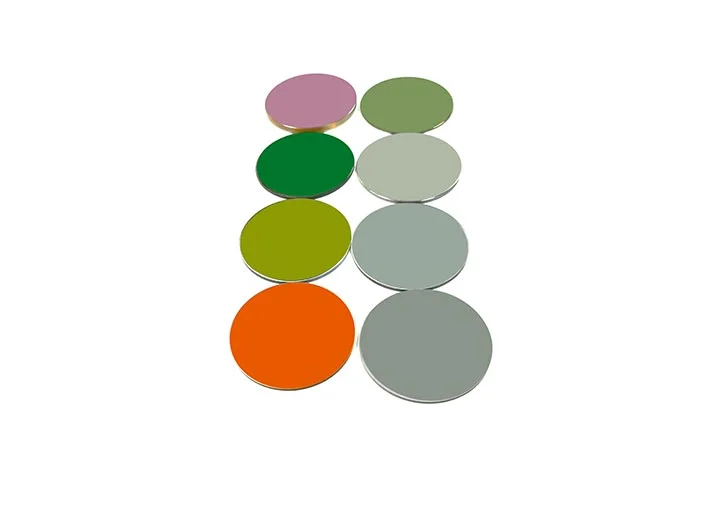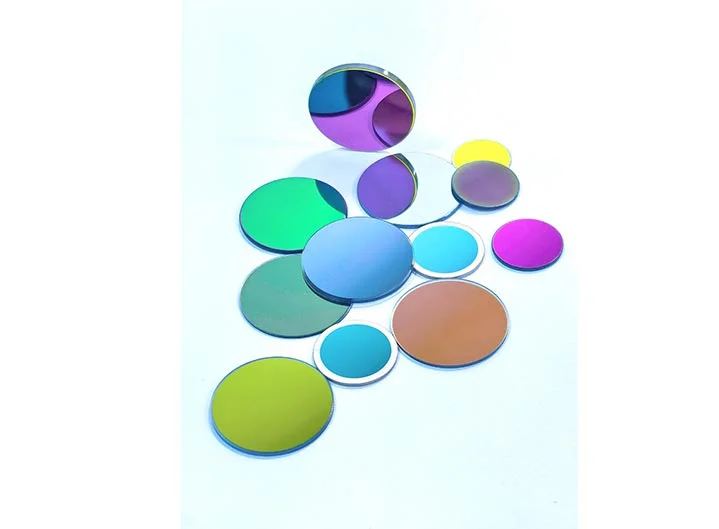Infrared filters are specialized optical devices that manage light transmission with precision. They let specific infrared wavelengths through while stopping others. Performance depends on the materials used and advanced coating methods. This article explains how these filters function, why materials are crucial, and their uses in thermal imaging, medical equipment, and industrial sensors.

What Is the Core Function of an Infrared Filter?
How Do Infrared Filters Control Light Transmission and Blocking?
Infrared filters achieve precise spectral control by selectively allowing target infrared wavelength light to pass through via material properties (e.g., germanium and zinc selenide, which transmit infrared while absorbing visible light) or multi-layer dielectric film interference effects, while blocking other wavelengths through absorption or reflection mechanisms.
Why Filter Materials Make a Difference
The materials used affect several key factors:
How well light passes through
Physical strength
Performance under temperature changes
Each material has limits on which wavelengths it can handle. For example, some work poorly beyond 8 micrometers. Heat properties are important too, especially for devices facing temperature swings.
Common Materials for Infrared Filters
Germanium: The High-Performance Choice
Germanium excels for long-wave infrared uses (2-14 micrometers). It stays stable in heat. These traits make it perfect for thermal cameras and aircraft systems.
Silicon: The Budget-Friendly Option
Silicon works well for mid-infrared ranges (1.2-7 micrometers). It costs less than germanium while still being durable. Because it’s used in computer chips, silicon fits well into electronic sensor systems.
Sapphire: The Tough Protector
Sapphire stands out for its hardness and heat resistance. It works from ultraviolet through near-infrared light (0.15-5 micrometers). Military gear and medical tools often use sapphire for protection.
The catch? It’s expensive and hard to shape. This limits it to special cases where its benefits justify the cost.
Quartz and Fused Silica: The Versatile Pair
These materials handle both ultraviolet and near-infrared light (0.18-3.5 micrometers). They barely expand when heated, making them stable in precise instruments like spectrometers.
They’re ideal when a device needs to work with both UV and IR light without distortion.
Chalcogenide Glasses: The Customizable Solution
Made from elements like sulfur and selenium, these glasses target specific IR ranges (2-12 micrometers). Their flexible structure allows custom shaping while keeping good light properties.
They shine in small sensors and wearable medical devices where weight and exact wavelength control matter.
How Do Coating Technologies Improve Infrared Filter Performance?
What Role Do Anti-Reflective Coatings Play in Transmission Enhancement?
Materials like germanium bounce a lot of light away, sometimes 30% or more! Anti-reflective coatings stop this by making light waves cancel each other out. This lets more infrared light get through the infrared filter.
These coatings are super important for things like night vision cameras. You need every bit of light to make a clear picture.
How Do Dielectric Multilayer Coatings Enable Precise Bandpass Filtering?
Dielectric multilayer coatings are made of tons of thin layers that bend light in different ways. They work together to let only certain infrared light through and block the rest. This makes infrared filters really choosy about light.
Sometimes, you need a few layers to make the filter work just right. These are great for things like gas checkers or cameras that need to see lots of different lights.
Why Are Protective Coatings Crucial Against Environmental Exposure?
Infrared filters used outside or in tough factories need to handle water, chemicals, or scratches. Protective coatings, like diamond-like carbon (DLC), make them super strong while still letting light through.
These coatings keep filters working for a long time, even in hard places like army trucks or faraway cameras.
Which Performance Factors Depend Most on Material Selection?
How Does Material Affect Optical Transmission Range Suitability?
Each material lets different infrared light through. Here’s how some work:
Germanium: 2–14 micrometers
Silicon: 1.2–7 micrometers
Fused Silica: 0.18–3.5 micrometers
If you pick the wrong material, the light won’t get through right, and your picture will be bad. That’s why picking the right stuff is really important.
What About Mechanical Stability Under Harsh Thermal Conditions?
When it gets hot or cold, some materials can crack if they stretch too much. Sapphire doesn’t change shape much, even in crazy heat. That makes it great for tough jobs.
For things like drones that shake a lot, silicon is good because it’s light but still strong.
Can Environmental Resistance Be Engineered Through Material Choice Alone?
Coatings help a bunch, but the main material matters too. Some glasses soak up water if they’re not sealed. Others break down in chemicals. Picking a material that’s naturally tough, like sapphire, means less fixing later.
Which Application Needs Determine Your Filter Material Choice?
What Do Surveillance Systems Demand from Their Optical Filters?
Surveillance cameras need to work in all kinds of light, from bright sun to total dark. They use infrared filters to catch tiny heat differences from far away. Germanium with infrared narrowband filters is awesome here because it blocks extra light and keeps the picture clear.
How Sensitive Must Medical Diagnostic Equipment Be Toward Infrared Filtering Accuracy?
Doctor tools, like heat cameras for checking your body, need super exact infrared filters. Fused silica with special coatings works great because it catches tiny changes in heat without messing up. It’s also safe for touching skin.
Which Materials Withstand High Temperatures Found in Industrial Sensors?
Factories can get really hot or have gross gases. Sapphire with tough coatings or chalcogenide glasses are perfect for infrared filters in these spots. They stay strong and keep working, even around burning stuff.
How Can You Leverage Bodian’s Expertise in Infrared Filter Solutions?
If you need awesome infrared filters for things like gas checkers or space cameras, Bodian has you covered! They make special infrared narrowband filters using cool tricks to put thin layers on materials. These filters are super tough and exact.
Bodian helps with all kinds of jobs, from car safety cameras to army tools. Their filters work great because they’ve been making them for years with really smart science.
What Innovations Has Bodian Introduced into Material Engineering?
Bodian keeps making infrared filters better. They use special ways to stack thin layers so filters don’t break, even in hot or cold places. Their infrared filters can be made just right for any job, like catching specific light or staying strong outside.
They’ve figured out how to make filters that stick together well and don’t crack, even when it’s really hot or cold. That’s awesome for tools used all over the world!
How Should You Strategically Select Materials Based on System Requirements?
Picking an infrared filter isn’t just about light. You gotta think about everything:
Want a clear picture? Pick materials that let lots of light through.
Need it tough? Choose stuff that won’t break.
Using it outside? Get materials that don’t mind water or chemicals.
Talking to experts like Bodian helps you pick the perfect filter for your job!

FAQ
Q1: Can one material cover all infrared bands effectively?
A: Nope, each material works for certain infrared light. You gotta pick the right one for your job.
Q2: Are coated filters more durable than uncoated ones?
A: Yup, coated infrared filters are way tougher. They fight off scratches, water, and chemicals better.
Q3: What’s better for thermal imaging: silicon or germanium?
A: Germanium is usually better because it lets more infrared light through for heat cameras.

